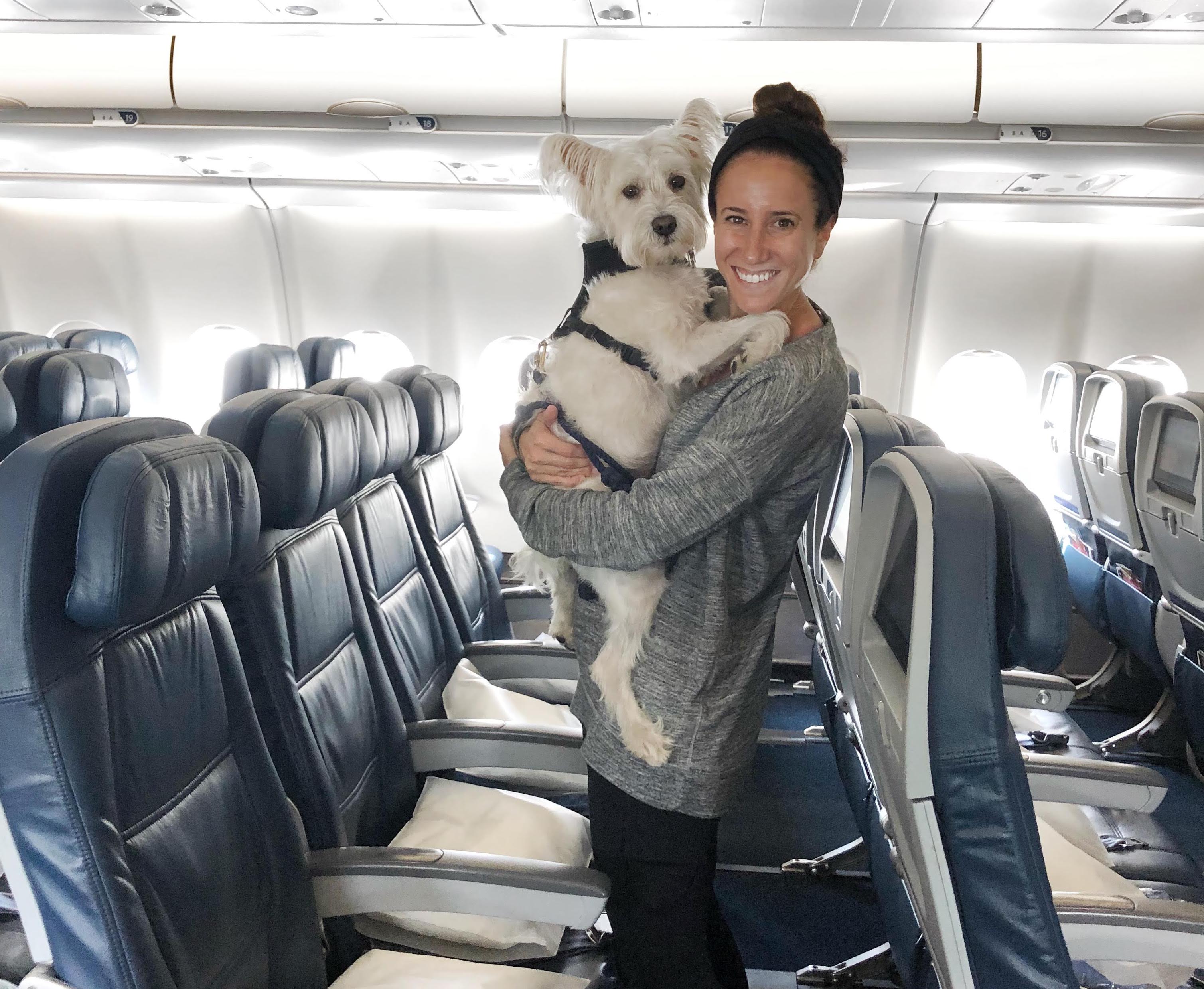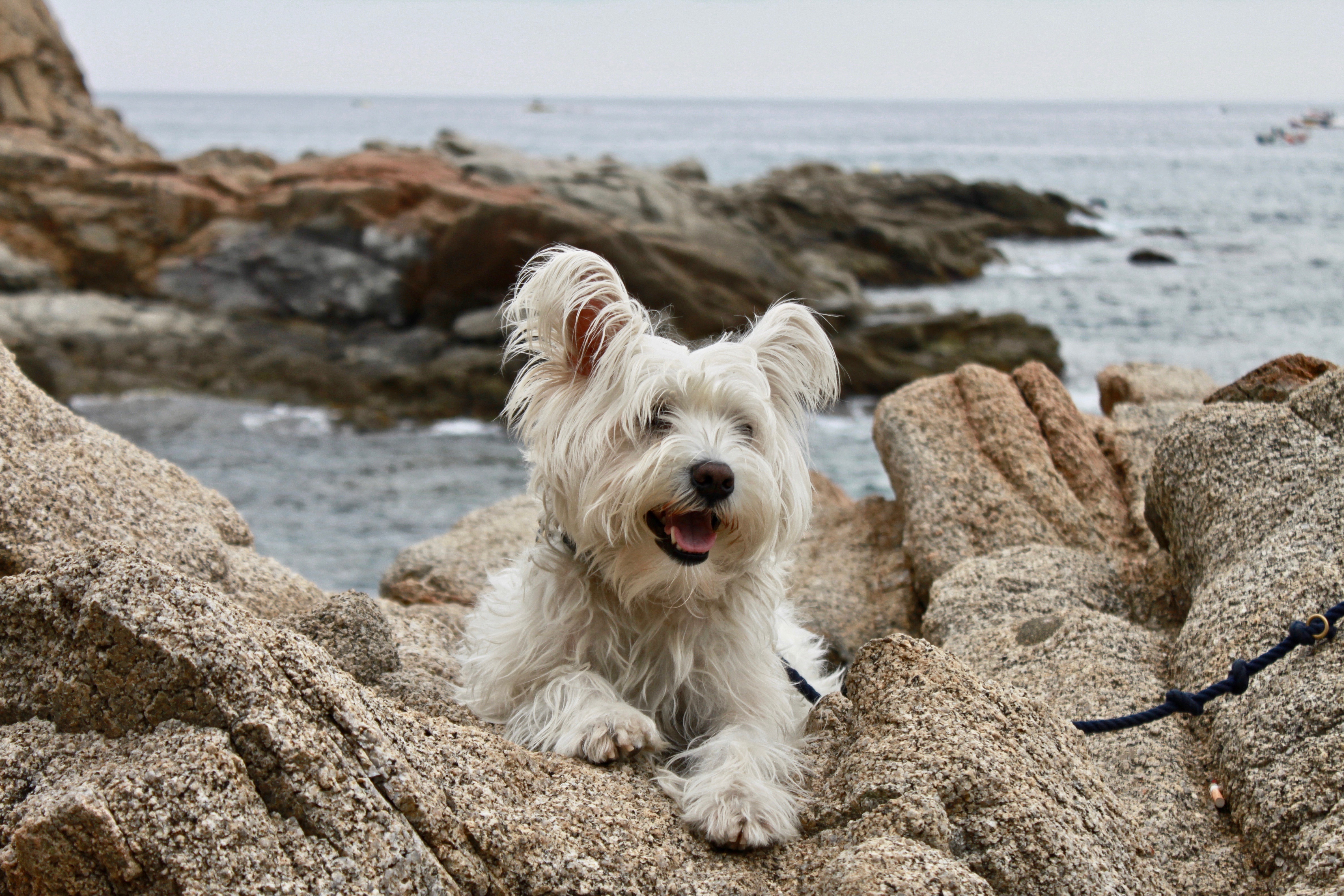
I have to give a lot of credit to my dog Ollie, he’s a moving champ! We adopted Ollie while living in NYC (he’s a rescue from the Bronx). Two years later we moved to San Francisco. A year and a half later we moved to Barcelona, Spain. And then 8 months after that we moved to Portland, Oregon. Needless to say, I’ve learned a lot during the pet-moving process. I’m not sure if Ollie has any idea what’s going on, but he has adjusted well to each new locale.
Whether you’re moving to a new city or a new country, here’s everything you need to know to make it a smooth process.
Let’s first tackle some major items for international moves.


Tips for International Moves
Research the Rules
Every country is different. Some require quarantines (length can vary), some have breed restrictions, vaccinations are required, and all will include paperwork and valid microchip. Some rules are pretty bizarre, like dogs with cropped ears or tails are not allowed to enter Switzerland without special permission. There are differences you need to know, like a rabies vaccination is valid for 3 years in the US but only 2 years in France. Definitely do your research!
To give you some insight into our move from the US to Spain, we needed to make sure Ollie’s standard vaccinations were up to date, there weren’t any special ones needed. We then had to visit the vet within 10 days of our flight to Spain and get special paperwork signed by the vet. The paperwork then had to be sent to the USDA for review, then sent back to us. It’s a bit stressful because all of this has to be done in 10 days, but thankfully everything arrived on time.
We were so stressed about the paperwork and were nervous for our arrival in Spain. Then at the airport literally no one looked at anything! But it’s always important to cover your bases. We had to do something similar when we moved back to the US and that time the paperwork was reviewed closely.
Prep Far in Advance
If you are moving to a country with specific vaccination needs, you may have to get some of these months in advance. You should start your research about 5 months in advance to ensure you have sufficient time for all the necessary vaccinations.
Figure Out Your Travel Plans
Are you flying with your pet in the cabin, in the cargo hold or on a totally different flight? A lot of this will depend on the airline, weight and breed of your pet. Some airlines don’t take pets in the cargo hold and sometimes this is based on the season of travel (for example, some airlines will not fly with pets in the cargo hold in winter).
Personally I was super nervous to put Ollie under the plane and fortunately he was able to sit in the cabin with us (he is an Emotional Support Animal which means on certain airlines he can sit with us). Figure out what you’re comfortable with and what the rules will allow for.
Let the Airline Know
Read all the rules of flying with your pup and alert the airline about your travel companion. There is likely some paperwork required as well. This needs to be filed before your flight (usually around 48 hours prior) so don’t wait until the last minute to get this taken care of.
Consider Outside Help
Totally stressed by all of this? Well you can pay someone to do this for you! I spoke with PetRelocation.com (my friend Erica of TheWorldWideWebers recommended them). From our conversations it sounds like they are a great option. They’ll make sure all the paperwork is correct and they’ll pick up your pet at home and deliver them to your new home. However, it’s a pricy undertaking. To move our 22 pound dog from the US to Spain would be about $3k each way. If you’re moving as part of a corporate relocation, you can try to get this written into your relocation stipend.

& whether you’re moving internally or domestic, there’s a lot to know and do…
Tips for both International & Domestic Moves
Find a Vet
First things first, look for a vet. If you don’t speak the language, do a little research to find one that speaks English. You want to make sure you can properly communicate. For those moving to Barcelona, we used L’Animalari and they were great. I recommend finding a vet within a week of your move as there may be local vaccinations that your pup will need. You also should register your pet in the event that they to get lost.
Learn About Vaccinations and Local Dangers
Not to get dramatic, but when you’re in a new place you don’t know what random things might harm your pet. To give you a couple of examples, in Spain we had to get Ollie a vaccination against leischmania, a dangerous sand flea. There were also extremely toxic caterpillars that we had to make sure didn’t come into contact with Ollie. When we moved to San Francisco we had no idea what a foxtail was (a weed). Turns out they are super dangerous for dogs and are ALL OVER the west coast. Within one week of living in SF we had to take Ollie to the vet for removal of a foxtail, which required him to be put under. No one had warned us about this. Ask all the questions!
Join a Facebook Group
This was particularly helpful when we moved to Barcelona. I joined a dog Facebook group and through this learned about dangers to watch out for, dog friendly places to visit and events to attend with your dog (confession, I didn’t attend any of these, but they seemed fun!).
Find a Few Reliable Dog Sitters/Walkers
Even if you don’t think you will need a sitter or walker upon arrival, it’s good to have one or two available should something come up. I met some amazing dog sitters through the DogBuddy app in Spain (it’s the European version of Rover). Hi Rocio, Ana & Andreina! You can try a service like DogBuddy or Rover or ask around the dog Facebook groups for recommendations. I think it’s good to have your main sitter/walker and then a reliable back up as well.
Pack lots of Food & Treats
You may not be able to find the same dog food that your pup is used to, especially with an international move. It’s best to slowly introduce new food to your dog–you should add small amounts of the new food into the old food over the course of the week and transition them fully to the new food. If rushed, your dog can get an upset stomach (no fun for the dog or the owner!). With the big move, bring lots of food and treats to allow for this transition time.

Moving domestically and especially internationally with Ollie has been stressful, but in the end everything worked out totally fine. When planning for our move to Spain I considered leaving Ollie with my parents because I was nervous about the move. I’m so glad we brought Ollie to Spain, he was an amazing travel and exploration companion and our time abroad wouldn’t have been the same without him.
Cover your bases, do your research and you and your pup are well on your way to a smooth move!














 Took these pictures weeks ago
Took these pictures weeks ago





